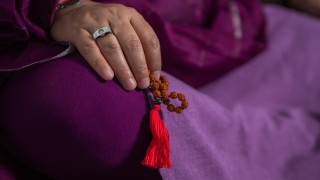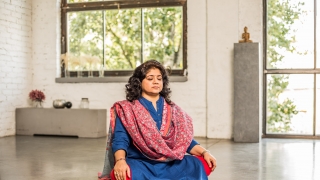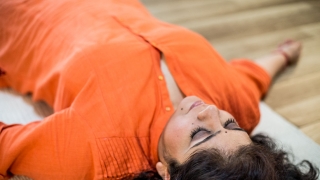
3 Guidelines for Chanting AUM
Is there a right way to chant AUM? Is it OM or AUM or Om or oM?

![]() 4 minutes
4 minutes
Most of the people who come for one to one Yoga classes are looking for benefits to the physical and mental body and may not have real craving/ appetite to understand the philosophy yet.
Why does this matter? When they practice mula-bandha without knowing what it really is, it creates an illusion of doing an advanced practice.
Bandhas in simple language are closings/bridge/knot/tie/restraints/locks. It is important that we understand what are we locking/bridging/tying/restraining/closing.
Closing: the downward flow of energy
Bridge: The lower realm to the upper realm, the body to the mind, mind to the prana.
Knot: Creating a knot so that the energy once raised does not fall back to the lower realm of chakras
Tie: Tie the unruly tendencies of the mind
Restrain: the senses through pratyahara
Lock: locking at the level of Mula-adaha so that unlocking may happen of the mula-adhara and the floodgates of lock may allow the building up of the energetic and electrical impulse, pushing the energy upwards effortlessly.
How can you actually use bandhas?
There are three levels of practicing Bandhas:
All bandhas are mudras! They are practiced to maintain/hold/lock a certain state of mind and prana. In order to do this, the mind has to be clear , gathered (ek-agra with pratya-ahara) and prana calibrated so that all the other four pranas are ready to merge into prana-prana.
In order to teach the bandhas as a practice it is important to share the philosophy and purpose behind it.
What is Mula-bandha (root lock)?
When we practice mula-bandha without knowing what it really is, it creates an illusion of doing an advanced practice. Apart from that we end up creating a strong contraction, tensing the muscles in the pelvic floor. The purpose of mula-bandha is not just toning the pelvic floor and organs, instead it is to relax the entire body.
When passion is rooted in contentment that is Mula bandha. The energy rises like the roaring of a lion and the hissing of a fierce snake, piercing through our weaknesses and transforming them as strengths. May we be established in that bandha that is essentially a liberation.
STAY IN TOUCH
Start your FREE subscription to Indu Arora's newsletter to get more on Yoga and Ayurveda here
Say hello on Instagram
Subscribe to my Youtube Channel.

Is there a right way to chant AUM? Is it OM or AUM or Om or oM?

Listen to the awakening chants of "Om Namaha Shivaya" in Indu Arora's voice. Read about the importance and special practices to celebrate Maha Shiva Ratri here.
STUDY: Join the ALL ABOUT AUM, 3 Class Series. Begins March 2025. Details here

Common queries related to the study of Yoga Nidra